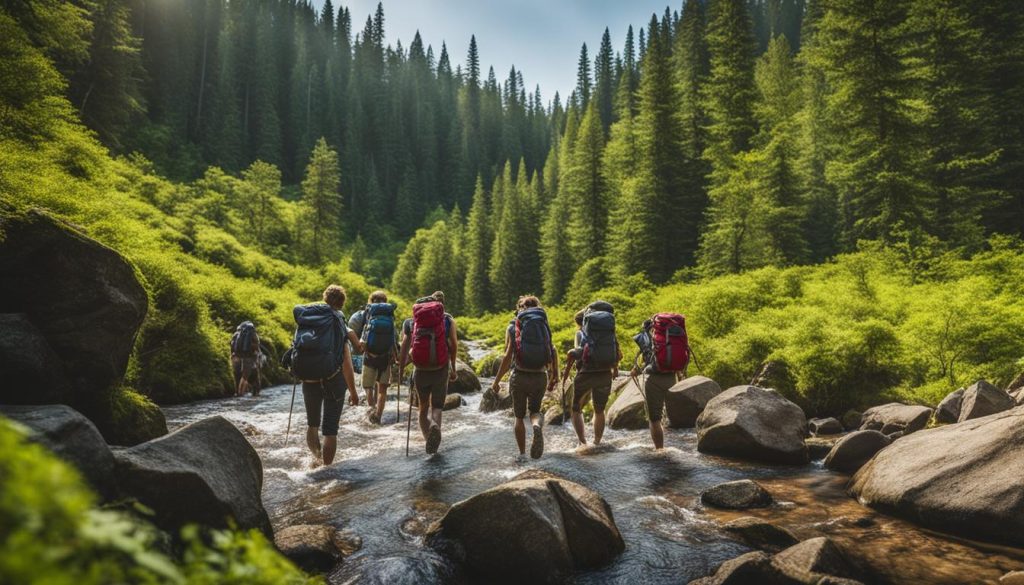Are you a nature enthusiast looking to embark on exciting hiking adventures without breaking the bank? If so, you’re in the right place! In this article, we’ll explore budget-friendly ways to make your hiking trips more affordable, allowing you to explore stunning trails and breathtaking landscapes without compromising your finances.
Read: Hiking in different types of terrain: Forests, mountains, deserts, and more.
Key Takeaways:
- Track your spending to identify areas where you can cut back and save money for your hiking trips.
- Reduce unnecessary expenses by implementing the “Latte Factor” and making small changes to your spending habits.
- Cook your meals at home and meal plan for your hiking adventures to significantly reduce food expenses.
- Set reminders and create a separate savings account specifically dedicated to your travel fund to stay motivated and achieve your savings goals.
- Engage in free hobbies like hiking to have low-cost adventures and make the most of your budget.
Track Your Spending
When it comes to budgeting for your hiking trips, one of the most important steps is to track your spending. By keeping a record of every dollar you spend, you can gain a better understanding of your financial habits and identify areas where you can cut back to save money for your adventures.
Tracking your spending is easier than ever with the help of budgeting apps like Mint, YNAB, or Trail Wallet. These apps allow you to easily log your expenses and categorize them, giving you a clear picture of where your money is going. Alternatively, you can create a simple spending journal using a notebook or a spreadsheet.
Once you have a record of your spending, take the time to analyze it. Look for patterns and identify any unnecessary expenses that you can eliminate or reduce. By making small changes, like cutting back on eating out or entertainment expenses, you can free up more money to put towards your hiking trips.
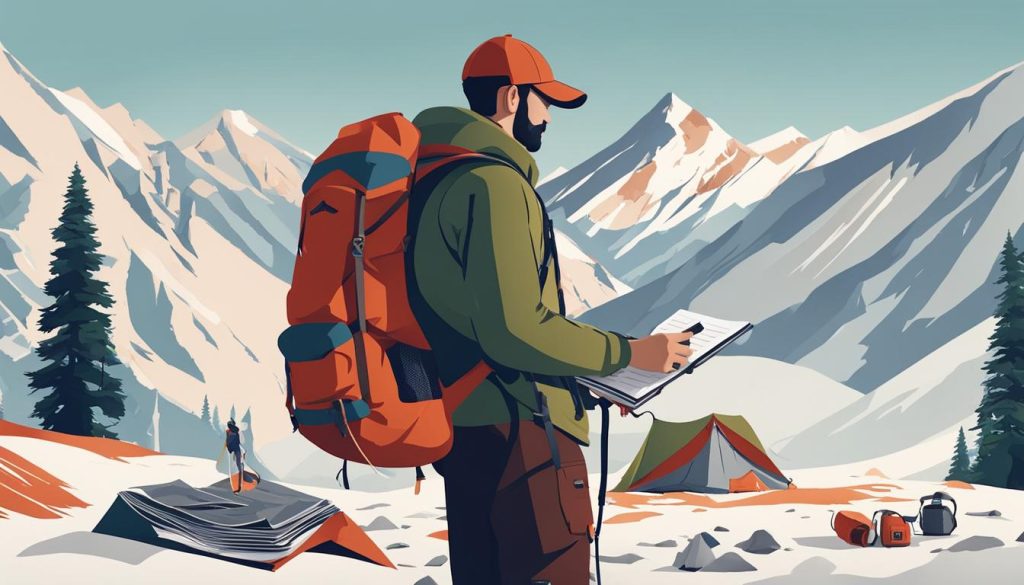
Track Your Spending: Summary
- Use budgeting apps like Mint, YNAB, or Trail Wallet to track your expenses.
- Create a spending journal to manually record your spending.
- Analyze your spending to identify areas where you can cut back.
- Make small changes to reduce unnecessary expenses and save more money for your hiking trips.
Cut Down on Extra Expenses – “The Latte Factor”
When it comes to saving money, cutting down on extra expenses is essential. One popular concept that highlights the impact of small daily expenditures is known as “The Latte Factor.” This idea suggests that by making small changes to your spending habits, you can free up more money for your hiking adventures. By eliminating unnecessary expenses like daily coffee runs or indulgent treats, you can reduce your daily spending and redirect those funds towards your budget-friendly hiking trips.

While a single latte may not seem like a significant expense, it adds up over time. By making your own coffee at home or opting for more affordable alternatives, you can save money that can be put towards your hiking adventures. Remember, every small saving counts and can make a difference in achieving your budget travel goals.
The Latte Factor – A Real-Life Example
“I used to spend $5 on a cup of coffee every day. It seemed like a small expense, but over the course of a month, I was spending $150 on coffee alone. By cutting out this expense and brewing my coffee at home, I was able to save $1,800 in a year. That extra money went towards funding my hiking adventures, allowing me to explore more trails and experience the beauty of nature without breaking the bank.” – Jenny, a frugal hiker and avid traveler
By being mindful of your daily expenses and making small changes, you can cut down on extra costs and save money for the hiking trips you’ve always dreamed of. Whether it’s brewing your own coffee, packing lunch instead of eating out, or finding frugal alternatives, every effort counts towards achieving your budget travel goals.
Cook Your Meals at Home
Eating out can be expensive, especially when you’re on a tight budget. By cooking your meals at home and meal planning for your hiking trips, you can significantly reduce your food expenses. Set aside time to plan your meals, shop for groceries, and do some meal prepping. Cooking at home not only saves money but also allows you to make healthier choices and cater to any dietary restrictions.
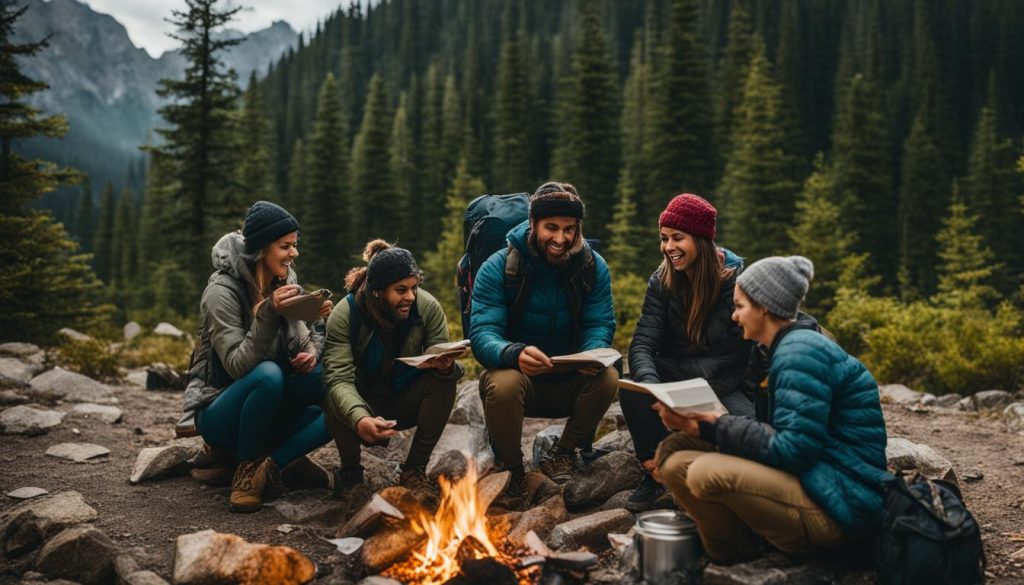
When preparing your meals for hiking trips, consider lightweight and non-perishable options that are easy to carry and won’t spoil quickly. Some popular choices include dehydrated meals, trail mix, energy bars, and canned goods. These options are not only budget-friendly but also provide the necessary nutrition and energy for your outdoor adventures.
Benefits of Cooking Your Meals at Home for Hiking Trips
- Saves money by avoiding expensive restaurant meals
- Allows you to control the ingredients and cater to specific dietary needs
- Enables meal customization based on personal preferences
- Reduces waste and environmental impact by using reusable containers
“Cooking your meals at home for hiking trips not only helps you save money but also gives you the freedom to create delicious and nutritious meals tailored to your preferences. With a little planning and preparation, you can enjoy satisfying meals during your outdoor adventures without breaking the bank.” – Outdoor Enthusiast
By cooking your meals at home, you can enjoy the benefits of saving money, maintaining a healthy diet, and having full control over your meals. Embrace the opportunity to unleash your culinary skills and experiment with different recipes to create delicious meals that fuel your hiking adventures.
Set Reminders for Your Savings Goal
When it comes to saving money for your hiking adventures, setting clear goals and staying motivated is key. One effective way to stay on track is by setting reminders for your savings goal. By having a visual representation of what you’re working towards, you’ll be more likely to make smarter spending decisions and resist unnecessary expenses.
There are several ways you can create reminders for your savings goal. You can start by placing a sticky note on your fridge or bathroom mirror with the specific amount you want to save and the deadline you’ve set for yourself. This constant visual reminder will help keep your goal front and center in your mind.
Another option is to create a separate savings account specifically for your hiking fund. Many banks allow you to give your account a custom name, such as “Hiking Adventures,” which serves as a constant reminder every time you check your balance. This separation makes it easier to track your progress and resist the temptation to dip into those funds for other expenses.
| Visual Reminders for Saving Money |
|---|
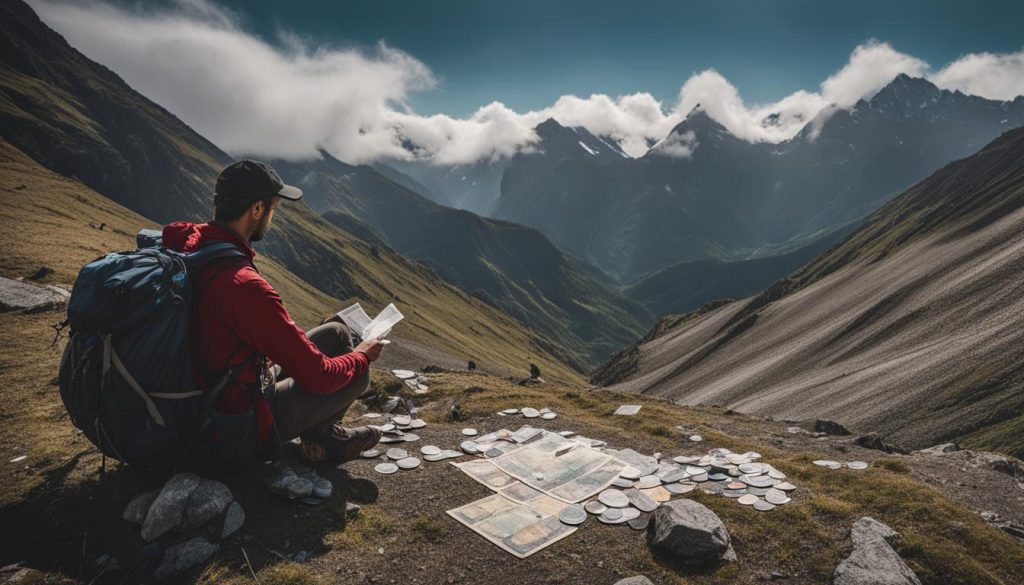 |
| Place a sticky note with your savings goal on your fridge or mirror. |
| Create a separate savings account with a custom name for your hiking fund. |
Additionally, you can utilize technology to set reminders and track your progress. There are numerous mobile apps and budgeting tools available that allow you to input your savings goal and send you notifications and reminders to stay on track. These reminders can serve as a gentle nudge to curb impulse spending and help you stay focused on your financial objectives.
Remember, saving money is not always easy, but by setting reminders for your savings goal, you can stay motivated and make your hiking adventures a reality. Whether it’s a physical reminder in your daily life or a digital prompt on your phone, find a method that works best for you and keeps your eyes on the prize.
Create a Separate Savings Account
One of the most effective ways to save money for your hiking adventures is by creating a separate savings account dedicated to your travel fund. This allows you to track your savings progress and ensures that the money you set aside for hiking stays untouched. By treating this account as off-limits for everyday expenses, you’ll have a clear picture of how much you’ve saved and how close you are to reaching your budgeting goals.
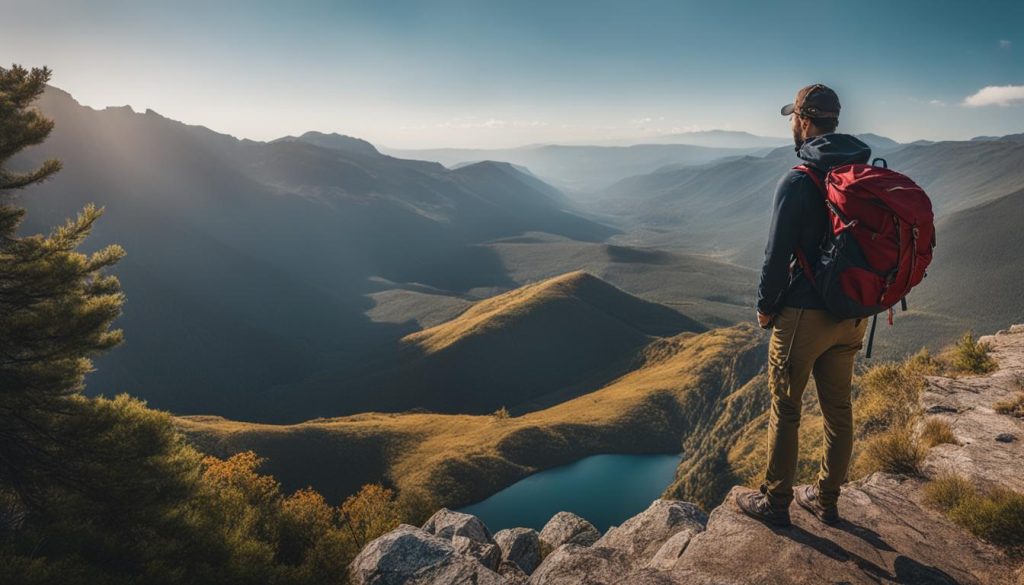
Opening a separate savings account is easy and can be done either at your current banking institution or with an online bank. Look for an account that offers a high-interest rate to help your savings grow over time. By automating regular contributions to this account, such as setting up automatic transfers from your checking account, you can make consistent progress towards your savings goals without having to manually remember to save.
A separate savings account not only helps you stay focused on your hiking goals, but it also provides a sense of accomplishment as you see your funds steadily grow. With this dedicated account, you can embark on your hiking adventures with peace of mind, knowing that you have the money set aside to cover your travel expenses.
Pick Up a Free Hobby
Engaging in free hobbies and outdoor activities can be a great way to save money and make the most of your leisure time. One low-cost hobby that offers numerous benefits is hiking. Not only does hiking allow you to connect with nature and enjoy scenic views, but it also provides an opportunity to explore new trails and challenge yourself physically. Best of all, hiking is a budget-friendly activity that can be enjoyed by people of all ages and fitness levels.
Hiking requires minimal equipment, making it a cost-effective hobby. All you need is a sturdy pair of shoes, comfortable clothing, and a water bottle. There are also many free hiking trails available, ranging from easy nature walks to more challenging summit hikes. You can find information on local hiking trails and their difficulty levels through websites, apps, and local hiking clubs.
Not only does hiking offer an affordable way to stay active and spend time outdoors, but it also provides numerous health benefits. Regular hiking can improve cardiovascular fitness, strengthen muscles, and boost mental well-being. It allows you to disconnect from technology and immerse yourself in the beauty of nature, reducing stress and promoting mindfulness.
So why not pick up hiking as a low-cost hobby? It’s a great way to explore new places, stay fit, and make lasting memories without breaking the bank. Whether you hike alone, with friends, or join a local hiking group, you’ll discover a whole new world of adventure and enjoyment. Lace up your boots, grab your backpack, and hit the trails!

Quote:
“Hiking is a form of meditation for me. It allows me to connect with nature, recharge my mind, and find peace within myself.” – Anonymous Hiker
Cut Down on Your Subscriptions
If you’re looking to save money on entertainment and other monthly expenses, one area to focus on is cutting down on your subscriptions. Monthly subscription services can quickly add up, eating into your budget. By evaluating your subscriptions and making some changes, you can free up valuable funds for your hiking adventures. Here are some tips to help you get started:
1. Evaluate Your Subscriptions
Take some time to review all of your current subscription services. This includes streaming platforms, music subscriptions, gaming memberships, and any other recurring monthly expenses. Consider whether each subscription is truly essential and providing value for the cost.
For example, if you’re subscribed to multiple streaming platforms, see if you can consolidate or share subscriptions with family or friends. This can help reduce costs while still giving you access to a wide range of content.
2. Seek Out Budget-Friendly Alternatives
Instead of relying solely on paid subscription services for entertainment, explore budget-friendly alternatives. Your local library is a great resource for free books, movies, and audiobooks. Many libraries now offer digital lending platforms, allowing you to access a wide selection of media from the comfort of your own home.
You can also find free or low-cost entertainment options online. Platforms like YouTube offer a vast array of content, from educational documentaries to workout videos and music concerts. Additionally, there are websites and apps that provide free or discounted access to e-books, audiobooks, and online courses.
3. Set a Monthly Entertainment Budget
To ensure you stay on track with your savings goals, consider setting a monthly entertainment budget. This will help you allocate a specific amount of money for subscriptions and other entertainment expenses. By having a set limit, you’ll be more mindful of your spending and less likely to overspend on unnecessary services.
Remember, cutting down on subscriptions doesn’t mean you have to sacrifice entertainment completely. It’s about finding a balance and prioritizing the services that bring you the most value. By making some simple changes, you can save money and have more funds available to enjoy your hiking adventures.

| Subscription Services | Monthly Cost |
|---|---|
| Netflix | $12.99 |
| Spotify Premium | $9.99 |
| Amazon Prime Video | $8.99 |
| Hulu | $5.99 |
| Total Monthly Cost | $37.96 |
Sell Your Stuff
One of the most effective ways to generate extra cash for your hiking trips is by selling unused items. Take a look around your home and identify items that you no longer use or need. This could include clothing, outdoor gear, electronics, or household items. By decluttering and selling these items, you not only create more space in your home but also contribute to your travel fund.
There are many second-hand marketplaces available online where you can easily sell your items. Platforms like Facebook Marketplace, OfferUp, or Poshmark allow you to reach a wide audience and connect with potential buyers. Take clear and enticing photos of your items, write detailed descriptions, and price them competitively. Remember to factor in any shipping costs or fees associated with the marketplace you choose.
| Second-Hand Marketplaces | Pros | Cons |
|---|---|---|
| Facebook Marketplace | Wide audience reach Easy listing process |
No shipping integration Local pick-up required |
| OfferUp | User-friendly interface Shipping integration |
Smaller audience compared to Facebook Marketplace |
| Poshmark | Specifically for fashion items Large user base |
Fees associated with sales |
Remember to be honest and detailed in your item descriptions to attract potential buyers. Highlight any unique features or qualities of the item that could make it more appealing. Additionally, consider offering bundle deals or discounts for multiple items to incentivize buyers.
“Selling unused items not only helps me declutter my space but also gives me extra money to fund my hiking adventures. It’s a win-win situation!”
Get an Idea of your Costs and Book a Cheap Flight and Accommodations
To make your hiking adventure more budget-friendly, it’s important to have an idea of your costs and find affordable options for flights and accommodations. By doing some research and utilizing online tools, you can save money without compromising on the quality of your trip.
Estimating the Costs
Start by estimating the costs associated with your hiking trip. Consider factors such as transportation, accommodation, meals, park fees, and any additional activities you plan to participate in. By having a rough estimate of your expenses, you can determine how much you need to save and identify areas where you can cut costs.
| Expense | Estimated Cost |
|---|---|
| Flights | Average prices range from $300 to $800, depending on the destination and time of year. |
| Accommodation | Budget-friendly options include camping ($10 to $30 per night), hostels ($20 to $50 per night), or budget hotels ($50 to $100 per night). |
| Meals | Plan to spend $20 to $40 per day on food if you cook your meals or eat at affordable local restaurants. |
| Park Fees | Entry fees vary but typically range from $10 to $30 per person per day. |
| Activities | Additional activities, such as guided hikes or equipment rentals, can range from $20 to $100 per person. |
Booking Affordable Flights and Accommodations
Once you have an estimated cost breakdown, you can focus on finding budget-friendly options for flights and accommodations. Use flight tracking websites like Scott’s Cheap Flights to stay updated on the latest deals and discounts. Booking your flights in advance or during off-peak seasons can also help you secure cheaper fares.
When it comes to accommodations, consider staying in budget hotels, hostels, or even camping if suitable for your hiking destination. Websites like Booking.com, Hostelworld, or Airbnb often have discounted rates for budget travelers. Additionally, keep an eye out for any promotions or coupon codes that can further reduce your accommodation expenses.
By taking the time to estimate your costs and book affordable flights and accommodations, you can ensure that your hiking adventure remains within your budget while still allowing you to have a memorable and enjoyable experience.
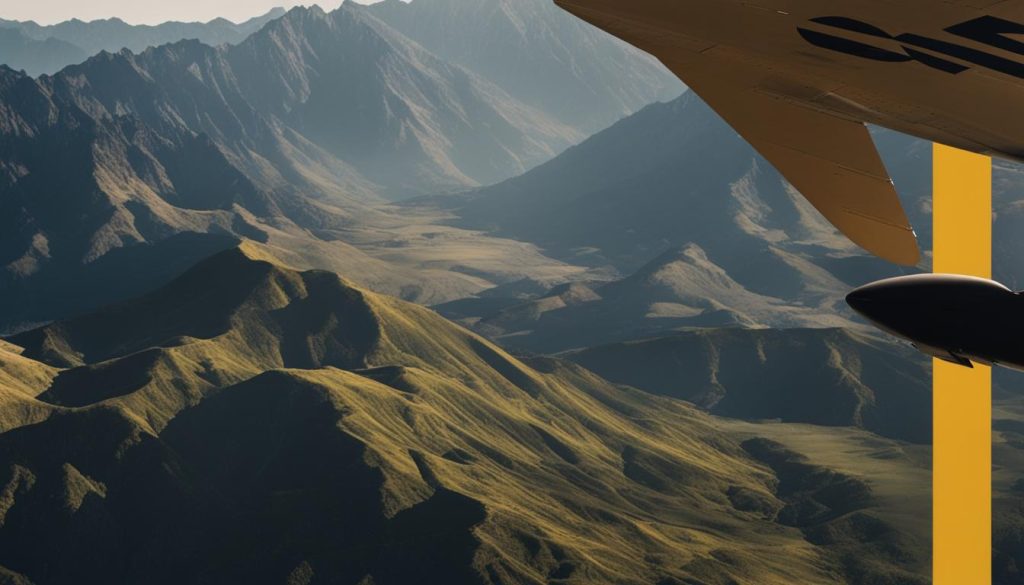
Find Free Activities
When you’re on a budget, finding free activities can be a great way to enjoy your hiking adventures without breaking the bank. Fortunately, there are plenty of budget-friendly outdoor activities and local attractions that you can explore without spending a dime.
One of the best ways to start is by checking the local tourism board’s website for a list of free things to do in the area. They often have information on guided nature walks, community events, or cultural festivals that you can participate in for free. These activities not only allow you to connect with the local community but also provide opportunities to immerse yourself in the culture and natural beauty of the area.
“Exploring local attractions and taking advantage of free activities can enhance your hiking experience without straining your budget.” – Outdoor Enthusiast Magazine
Another budget-friendly option is to discover free hiking trails. Many parks and nature reserves offer marked trails that are open to the public at no cost. These trails often lead to beautiful viewpoints, hidden waterfalls, or unique geological formations, allowing you to experience the beauty of nature without any entrance fees.
Remember, hiking is an inherently low-cost hobby that provides numerous opportunities to explore and connect with the great outdoors. By incorporating free activities into your itinerary, you can enhance your hiking experience and make the most of your budget.
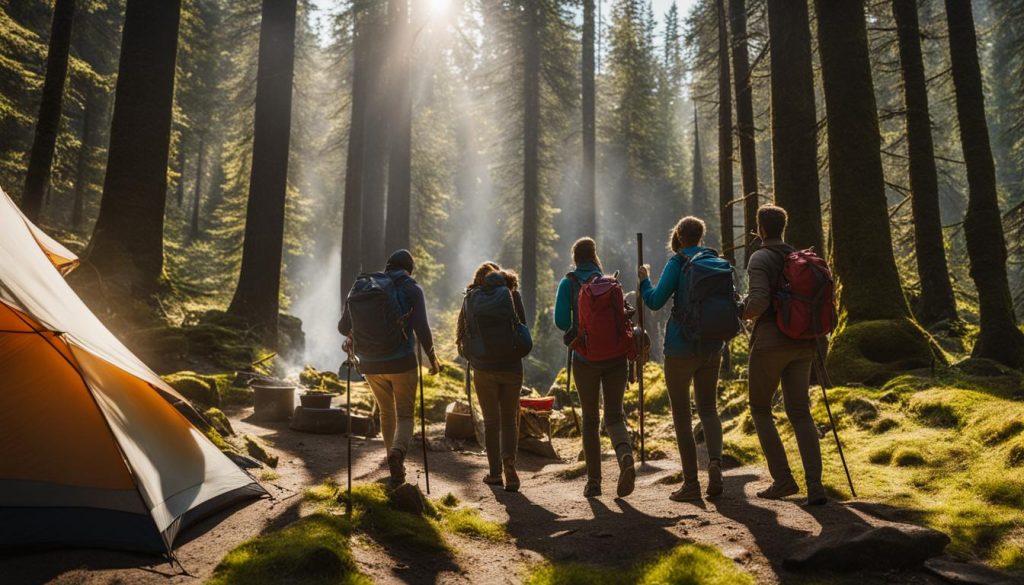
Table: Free Activities for Budget Travelers
| Activity | Description |
|---|---|
| Guided Nature Walk | Join a local expert for a guided nature walk and learn about the flora, fauna, and natural history of the area. |
| Community Events | Check out the local community’s calendar for free events such as concerts, farmer’s markets, or cultural festivals. |
| Local Museums | Many museums offer free admission on certain days or have discounted tickets for local residents. |
| Beach Day | If you’re near the coast, spend a day at the beach swimming, sunbathing, and enjoying the natural beauty of the shore. |
| Picnic in the Park | Pack a homemade lunch and head to a local park to enjoy a picnic surrounded by nature. |
Conclusion
Congratulations on reaching the end of this informative guide on hiking for budget travelers! By implementing the strategies mentioned throughout this article, you can save money and make your hiking adventures more affordable.
Tracking your spending, cutting down on extra expenses, and cooking your meals at home are simple yet effective ways to reduce costs. Setting savings goals and creating a separate savings account will help you stay motivated and focused on your hiking fund. Additionally, exploring free hobbies like hiking itself and cutting down on subscriptions can further contribute to your savings.
When it comes to booking your trip, researching and booking affordable flights and accommodations, as well as taking advantage of off-peak seasons, can make a significant difference in your budget. And don’t forget to explore local attractions and free activities to enhance your hiking experience without spending a fortune.
Remember, every small saving adds up, and with a little planning and smart choices, you can embark on unforgettable hiking adventures while staying within your budget. So start saving, keep exploring, and enjoy the beauty of nature without breaking the bank!
FAQ
How can I track my spending for budgeting my hiking trips?
You can use apps like Mint, YNAB, or Trail Wallet to track your expenses, or create a spending journal.
What is “The Latte Factor” and how can it help me save money for hiking?
“The Latte Factor” refers to cutting down on unnecessary daily expenses, such as coffee runs or indulgent treats, to free up more money for your hiking adventures.
How can cooking my meals at home save me money for hiking trips?
By cooking your meals at home and meal planning for your hiking trips, you can significantly reduce your food expenses.
How can I stay motivated to save money for my hiking adventures?
Set reminders for your savings goals, whether it’s through visual cues like sticky notes or by opening a separate savings account dedicated to your travel fund.
Are there any free hobbies or activities that can help me save money for hiking?
Yes, hiking itself is a perfect example of a cost-effective outdoor activity. By picking up hiking as a hobby, you can have more low-cost adventures and make the most of your budget.
How can I cut down on subscriptions to save money for hiking?
Evaluate your subscriptions and identify areas where you can cut back or share costs with friends or family. Utilize free alternatives like the local library or online resources for entertainment and reading materials.
How can I generate extra cash for my hiking trips?
You can sell unused items, such as clothing, outdoor gear, or household items, on online marketplaces like Facebook Marketplace, OfferUp, or Poshmark.
How can I find affordable flights and accommodations for my hiking adventures?
Research flight prices using websites like Scott’s Cheap Flights and book accommodations through platforms like Kayak or Expedia. Traveling during off-peak seasons and considering camping or budget-friendly accommodations can also help you save money.
Are there free activities I can incorporate into my hiking itinerary?
Yes, check the local tourism board’s website for a list of free things to do, such as guided nature walks, community events, or cultural festivals.
How can I save money and budget for hiking trips?
By tracking your spending, cutting down on unnecessary expenses, cooking at home, setting savings goals, researching affordable flights and accommodations, exploring free activities, and selling unused items, you can make your hiking trips more budget-friendly.

